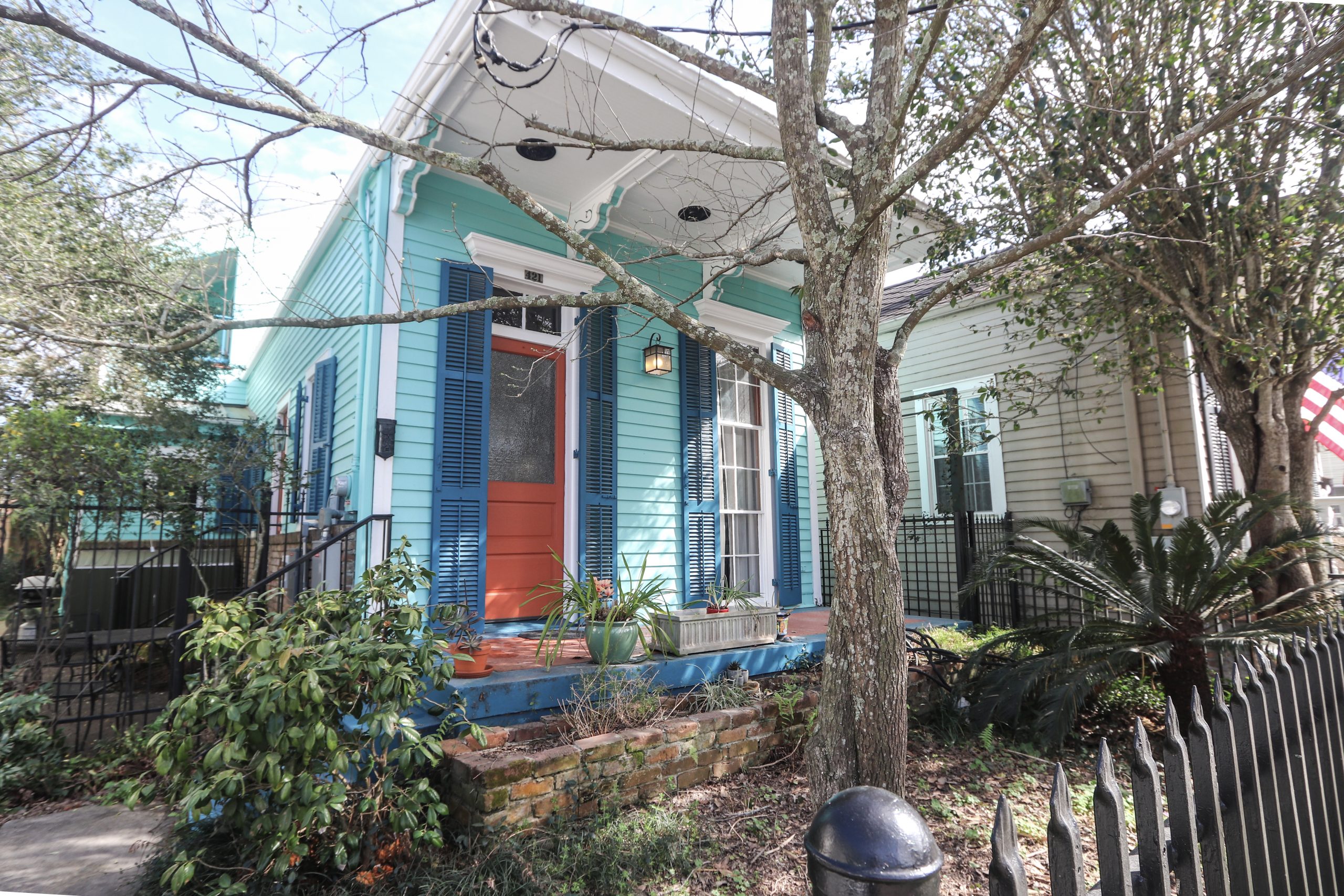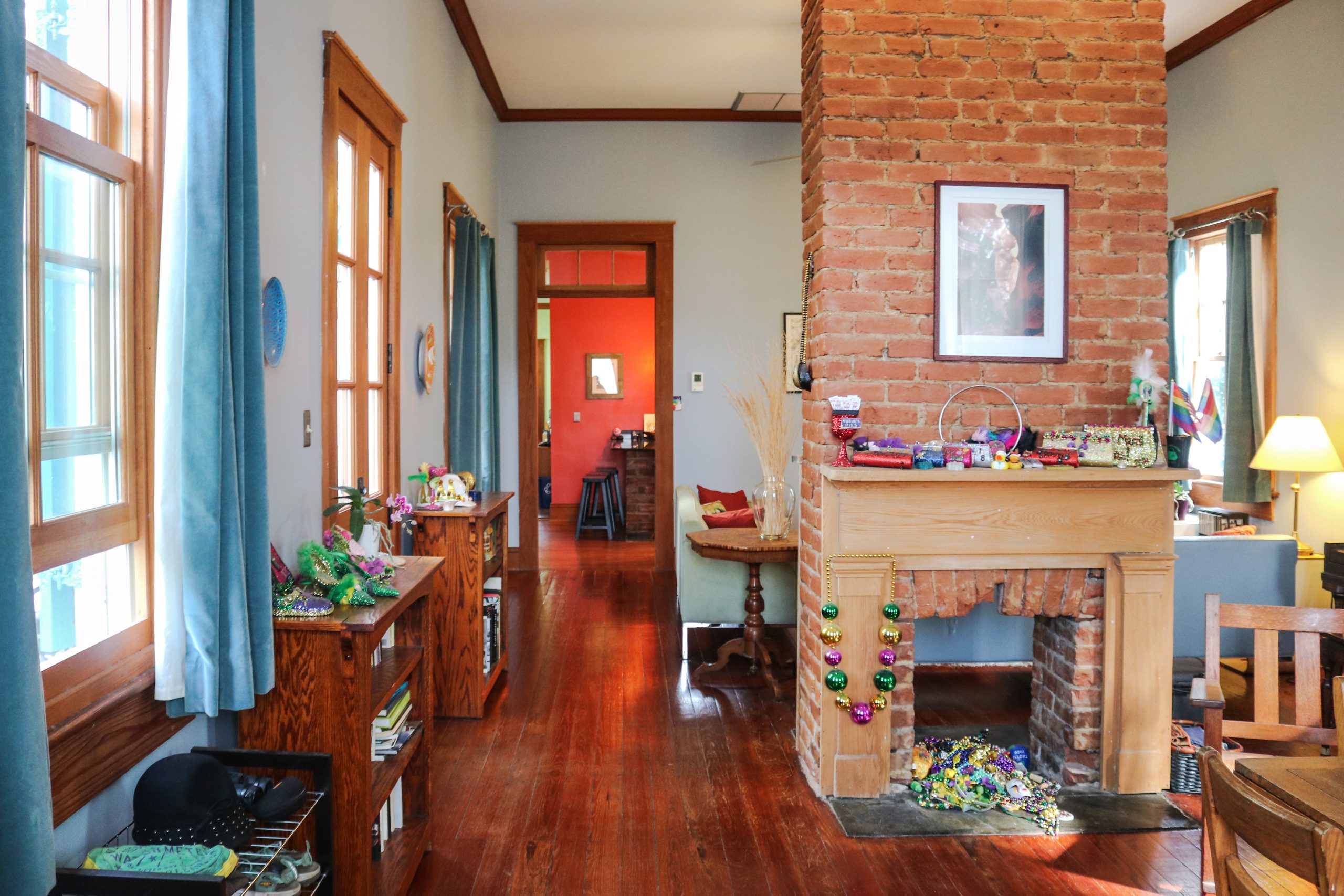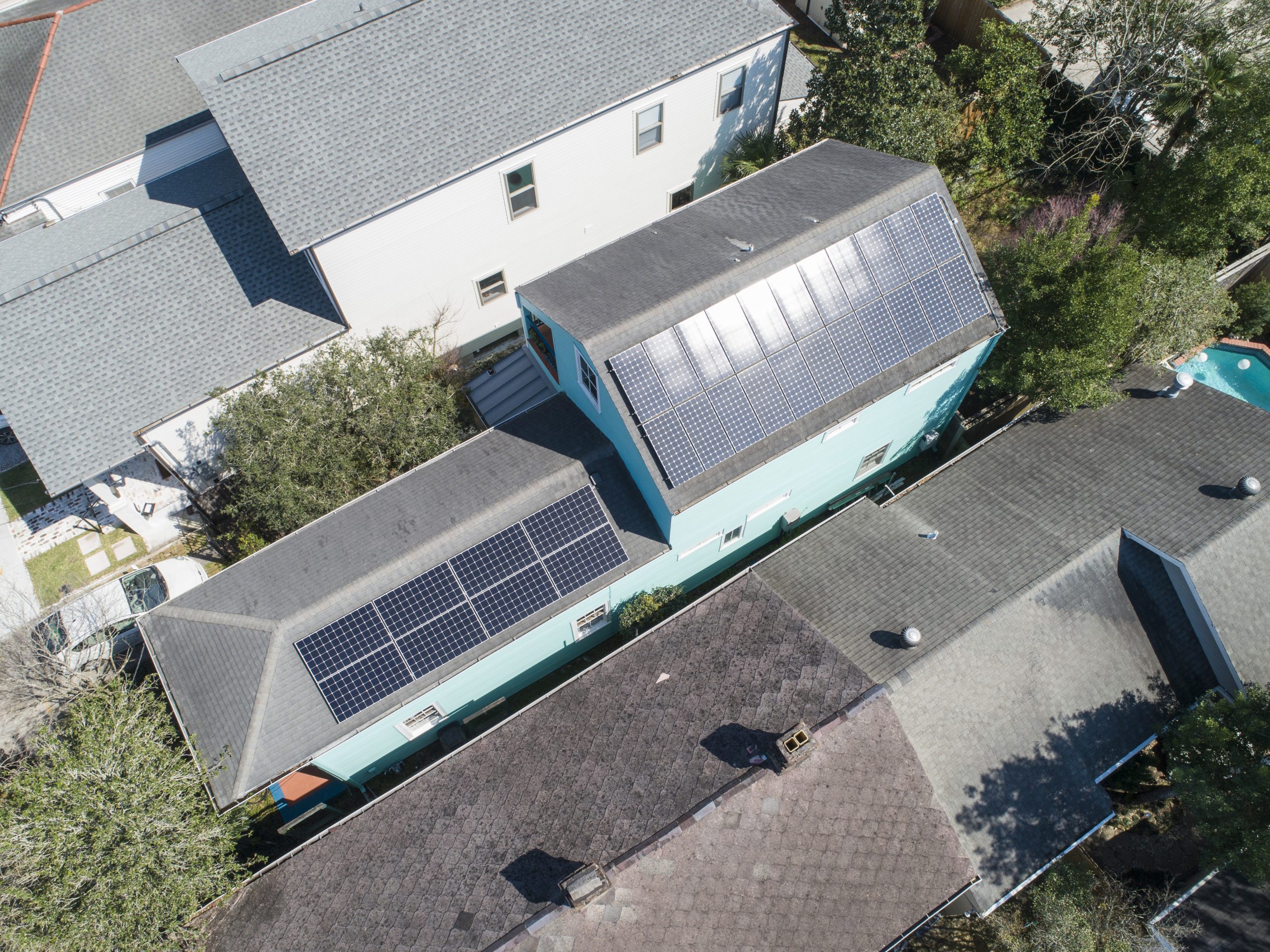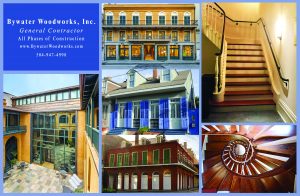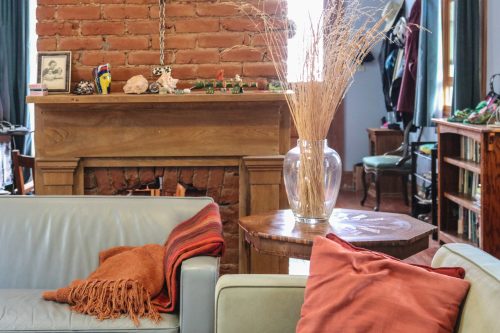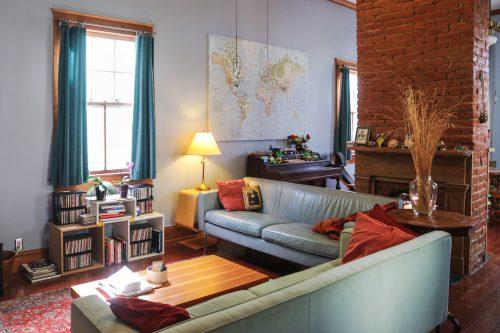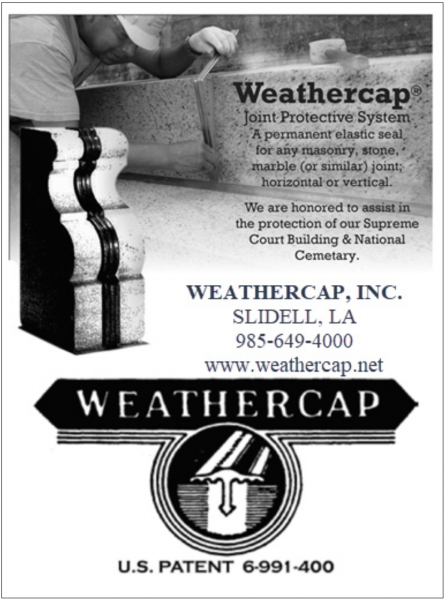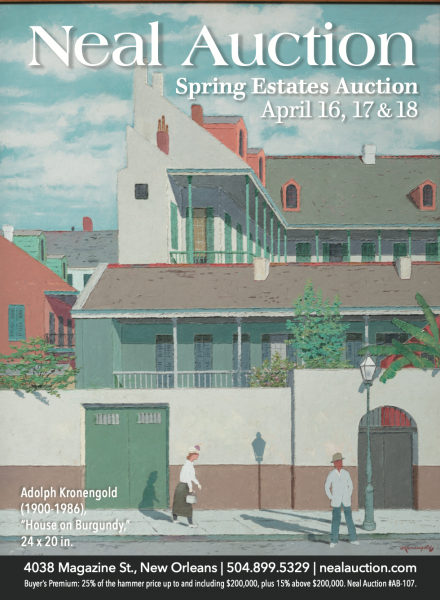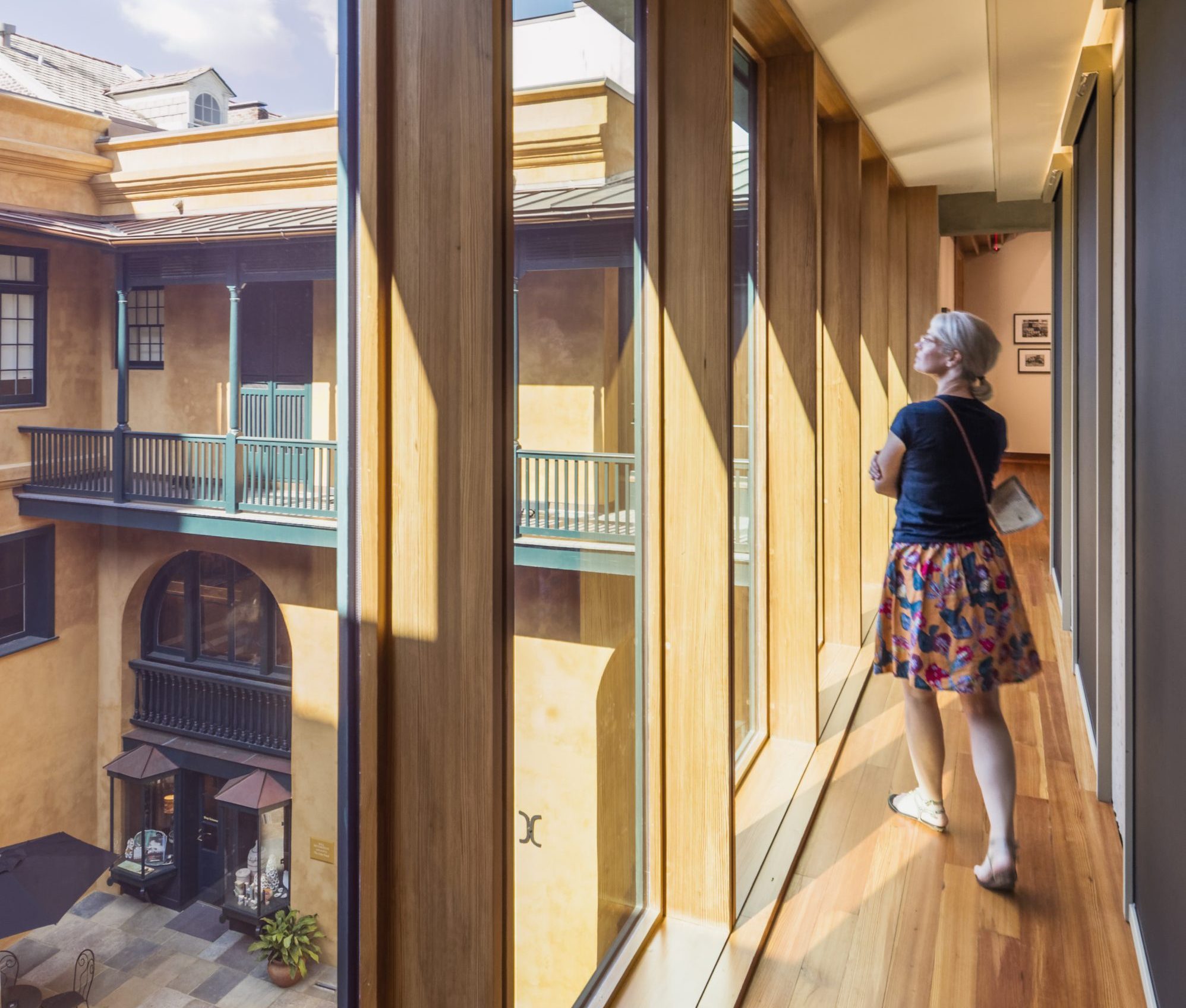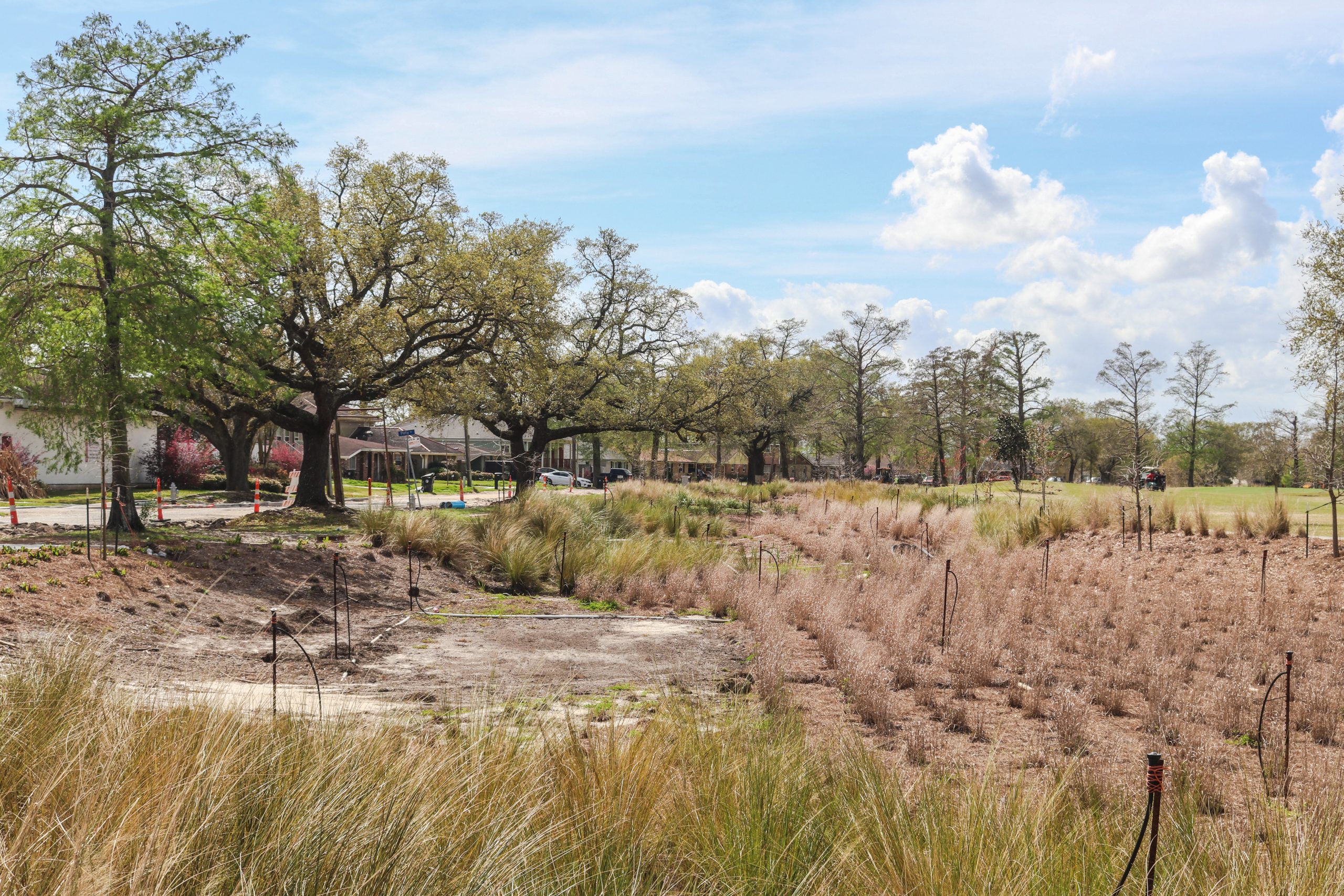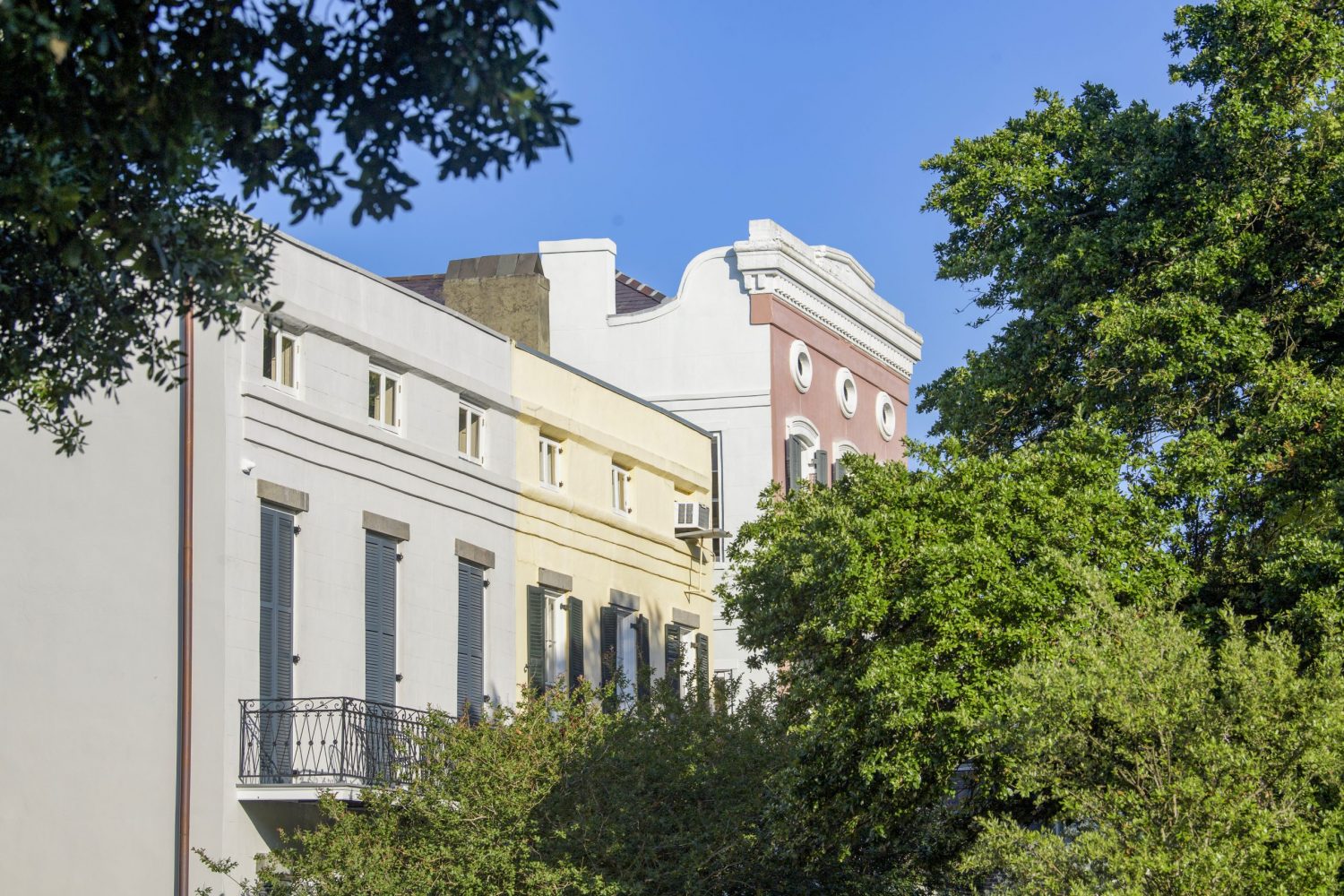This story appeared in the April issue of PRC’s Preservation in Print magazine. Interested in getting more preservation stories like this delivered to your door nine times a year? Become a member of the PRC for a subscription!
While first studying architecture and living in a 1913 house in Davis, Calif., Z Smith spent a summer dismantling and repairing an old wooden window. He gained a new appreciation for the ingenuity behind working windows and the craftsmanship needed to construct and maintain them. Perhaps it was no surprise that years later when house hunting in New Orleans, the triple-hung window on a Calhoun Street house caught his eye.
Smith, his wife, Caz Taylor, and their daughter relocated to New Orleans from Canada in 2009 after Taylor accepted a faculty position at Tulane University. “We had lived in Vancouver, British Columbia, where I was a 20-minute bike ride from work, but she had an hour-and-half bus commute,” Smith said. “It was her turn to be able to walk to work.” Smith is now the director of Sustainability and Performance at the architecture firm Eskew Dumez Ripple
Mindful of the city’s unique environment, Smith and Taylor reviewed flood maps as they house hunted to focus their search in areas of lesser risk. They also sought out an older house. “We had always lived in houses built around 1900 and really wanted that character,” said Smith. “Why not try to live in an amazing piece of history?”
The couple found their piece of history on Calhoun Street after stumbling upon a walk-through intended only for real estate agents. The shotgun house was constructed around 1880 and expanded in the 1940s or ’50s. The prior owners added a camelback in 2004.
Operable wood windows, milled in the traditional form, allow breezes into the home in mild weather and seal tightly when shut. Photo by Liz Jurey.
It ticked the boxes for charm and location. Today, if Taylor’s commute runs long, it’s likely because she’s been distracted by an avian rarity. “She is an avid birdwatcher,” said Smith, “and gets to walk to work through Audubon Park.”
Having lived through multiple renovations, the couple was happy that this home was move-in ready. They spent a year getting to know the property before making their own mark. During that winter, Smith was shocked to find that a thermometer placed on the floor registered a chilly 55 degrees Fahrenheit. “We moved from Canada, and it was colder here because we just had the floorboards.”
Advertisement
They soon set about making a series of upgrades focused on comfort and energy efficiency. The careful installation of closed cell insulation below the floorboards helped solve the problem of chilly toes in winter while leaving the joists exposed to allow for regular termite inspection. Below the roof, open cell foam insulation is moisture permeable in case of a leak and eliminates the problem of sweaty ducts in the attic by significantly reducing summer heat gain.
Atop the roof, a solar array provides clean electricity for systems and appliances. By upgrading a conventional gas furnace and air conditioner to an efficient heat pump, they reduced their electricity use significantly. The couple have continued to upgrade their appliances, so the home is now 90 percent electric. As appliances were replaced, they switched from gas to electric; the only gas appliance left is the on-demand water heater, using only a few dollars worth of gas per month. They recently expanded the solar array and added a Tesla Powerwall. The battery system will enable the home to be up and running even if a storm knocks out the electric grid.
A significant solar array supplies all the power needed for efficient electric appliances while remaining mostly out of sight from the street.
Smith was adamant about keeping the triple-hung window, which he called “an amazing piece of engineering for 1880.” An experienced craftsman helped repair and weather-strip the facade windows. Others, however, were not original to the home and had significant deterioration. Smith and Taylor opted to replace them with new wooden windows. “We had reproductions of the historic windows made for the less prominent parts of the house using the original form of six-over-two lites.”
Throughout the process, Smith’s professional knowledge of building science and experience as a LEED Accredited Professional served him well. For many owners of historic homes, however, uncertainty about what to do can be paralyzing. They may have heard horror stories about mold or rot caused by incompatible materials.
It’s certainly true that off-the-shelf products intended for new homes may not be the right choice for older buildings. However, Smith, who serves as an advisor to Gov. John Bel Edwards’ Climate Change Task Force, is passionate that inaction is not the answer: “We can make buildings that are more resilient and work well in our hot, humid climate.”
“In our climate, the best way to save energy is to reduce drafts,” he advised. Drafts may be more noticeable in the winter, but the leaks are still there in the summer, taxing your air conditioner and wallet. Smith benefited from hiring a certified professional to conduct a blower-door test to identify air leaks and subsequently seal them. “Old houses need to be able to dry. That’s different than needing to leak,” he explained. “We lowered our house leakage, but we still get plenty of fresh air.”
Advertisement
Next, owners should look to add insulation, particularly in the attic, and upgrade heating and air conditioning systems. Those investments will pay off with energy savings over time, but just as importantly they will make a home more comfortable. “What’s important when you live in an old house is preserving what’s great about it,” added Smith. “You want the character of an older house and the comfort of a new home.”
Over time, as you replace appliances, look for high-efficiency electric ones. Smith and Taylor converted their clothes dryer and cook top last year. Electric appliances can be greener because they can be powered by renewable energy, delivered over the grid or from on-site solar panels.
Homeowners looking to go solar in one of New Orleans’ local historic districts may need a permit from the Historic District Landmarks Commission. Additional considerations include shade, roof pitch and direction (south-facing roofs receive more light). Smith and Taylor’s solar panels hug the roof perpendicular to the street, visible from the street only if you know where to look.
Even though Louisiana no longer offers a solar tax credit program, the couple still opted to expand the system last year. The price of solar panels had dropped significantly in the nine years since they did their initial solar installation, and the investment still made sense because their home was efficient and electric. Bragging rights were a nice bonus: “Last year, our house was net zero with us working from home,” Smith said. “Next year, we should start to go net positive as we go back into the office on weekdays.”
Nathan Lott, PRC’s Policy Research Director and Advocacy Coordinator, can be reached at nlott@prcno.org.
The fireplace and mantel remain a visual centerpiece of this historic home, but residents stay warm thanks to a modern, green approach. Photos by Liz Jurey.
Advertisements



